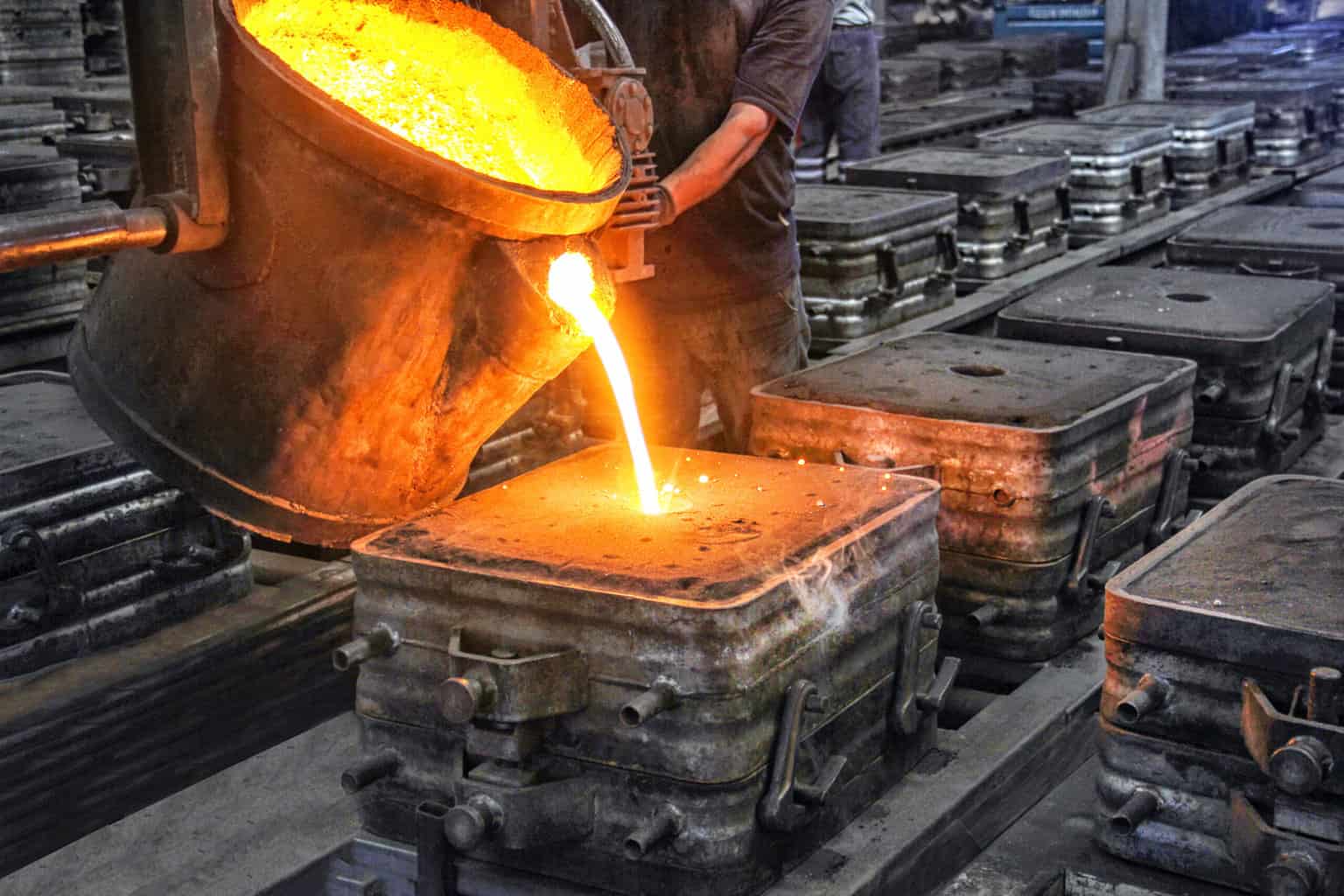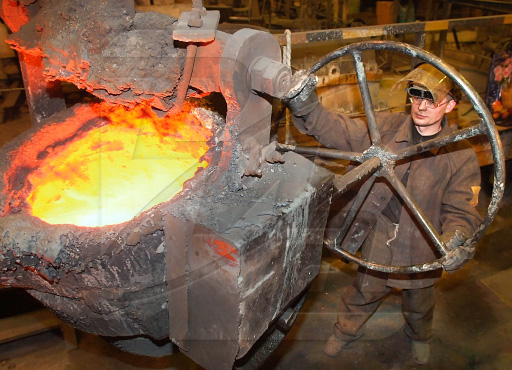Recognizing the Procedures and Advantages of a Spreading Shop
Casting foundries play an important function in contemporary production. They make use of numerous methods to change liquified materials right into strong types, customized for details applications. Each approach, from sand Casting to pass away spreading, supplies distinct advantages, impacting sectors like auto and aerospace. Recognizing these processes reveals not just their sensible advantages however also the innovations driving their evolution. What effects do these improvements hold for future production techniques and sustainability efforts?
Overview of Casting Procedures
Although different casting procedures exist, they all share the essential principle of changing liquid product into strong types. This improvement is achieved through pouring molten substances right into mold and mildews, where they cool and strengthen into desired forms. Different procedures cater to specific materials and applications, consisting of metal, plastic, and ceramic spreading. Die Casting is frequently used for steels, utilizing high stress to guarantee comprehensive layouts and smooth finishes. Investment casting, likewise called lost-wax casting, permits intricate styles and is fit for complex geometries. Various other techniques, such as gravity and centrifugal casting, make use of the pressure of gravity or turning to fill up mold and mildews effectively. Each process possesses one-of-a-kind advantages relating to material, scalability, and precision compatibility, causing varied applications throughout markets. Recognizing these processes is vital for choosing one of the most suitable method for an offered project, assuring the very best cause production and production.
Sand Spreading: Strategies and Applications

When the mold and mildew is prepared, liquified steel is poured right into the cavity, where it strengthens and cools down. After cooling, the sand is gotten rid of, disclosing the cast item. Sand Casting is preferred for its versatility, cost-effectiveness, and capacity to generate both small and large quantities. In addition, it accommodates a variety of metals, consisting of bronze, iron, and light weight aluminum. In general, sand Casting remains a fundamental method in Foundry procedures, enabling makers to satisfy varied manufacturing requires efficiently.
Investment Casting: Precision and Detail
Financial investment Casting is a very precise manufacturing procedure that produces detailed elements via using a wax pattern. This technique applies across numerous sectors, consisting of aerospace, automotive, and clinical, where precision and surface area coating are critical. Understanding the complexities of investment Casting can illuminate its advantages in creating complicated geometries and high-quality parts.
Process Summary
When considering the complexities of casting processes, investment Casting stands apart for its capability to create complicated shapes with amazing precision and information. This strategy involves creating a wax pattern, which is covered in a ceramic shell and consequently warmed to get rid of the wax, leaving a hollow mold and mildew. When the mold and mildew is prepared, molten steel is put in, filling the detailed tooth cavities. The cooling procedure allows the metal to solidify, after which the ceramic covering is damaged away, revealing the completed part. This approach is especially helpful for producing premium parts with smooth surface areas and tight resistances. Financial investment Casting decreases product waste and permits the unification of complicated geometries that are challenging to achieve with other casting approaches.
Applications and Industries
Although financial investment Casting is often connected with the aerospace and vehicle markets, its flexibility encompasses a vast array of applications across numerous industries. This method is specifically useful in making elaborate parts for clinical gadgets, where accuracy is crucial for functionality and safety. In addition, the energy industry benefits from financial investment Casting in the production of parts for pumps and wind turbines, showcasing its integrity under severe conditions. The electronic devices industry likewise uses financial investment Casting to create intricate housings and connectors that require great information. The defense industry uses this Casting strategy for generating durable, lightweight components. In general, financial investment casting's capacity to accomplish high levels of information and accuracy makes it a crucial process in multiple sectors.
Pass Away Spreading: Speed and Effectiveness
Die Casting is recognized for its quick manufacturing cycle, permitting makers to create components quickly and successfully. This approach not only ensures high precision in the ended up items however also adds to a cost-efficient production process. Because of this, pass away Casting sticks out as a favored choice in numerous markets seeking to maximize production without compromising top quality.
Fast Production Cycle
As suppliers seek to enhance performance, the rapid manufacturing cycle intrinsic in die Casting becomes a substantial advantage. This process permits for the quick production of components, enabling click to find out more manufacturers to satisfy high demand successfully. The capability to create huge amounts in a short timeframe minimizes lead times, improving the overall manufacturing workflow. In addition, computerized die Casting devices operate at a broadband, even more increasing outcome while maintaining regular top quality. This performance not just reduces labor prices however likewise maximizes resource use, adding to more sustainable production practices. By using quick production cycles, business can useful link react promptly to market changes, making certain competitiveness and promoting technology in product advancement. On the whole, die casting's speed is an important element in contemporary production success.
High Accuracy Components
The rapid production cycle in die Casting not just boosts rate but also considerably adds to the production of high precision components. This process involves injecting molten metal into a mold and mildew under high stress, permitting detailed designs and limited tolerances. Because of this, components created with die Casting display very little variant in measurements, making sure uniformity throughout big batches. This precision is especially helpful in markets such as vehicle and aerospace, where precise specs are essential. In addition, the high-speed nature of die Casting lowers the moment needed for manufacturing while preserving high quality standards. Consequently, producers can rely upon die casting to deliver accurate components efficiently, meeting the demands of modern engineering without jeopardizing on performance or reliability.
Economical Manufacturing Process
Making best use of production performance, pass away Casting stands apart as an affordable production procedure that significantly reduces labor and product costs. This strategy uses liquified steel, which is injected right into a mold under high stress, enabling for quick production of complex shapes with marginal waste. The high-speed nature of die Casting not just accelerates the manufacturing timeline yet likewise ensures consistency throughout huge volumes, making it excellent for automation. Furthermore, the toughness of the molds utilized leads to much longer manufacturing runs without the need for constant substitutes, thereby lowering expenses. Die casting emerges as a recommended choice for makers seeking to stabilize quality and affordability while satisfying high demand in various markets.
Advantages of Utilizing Casting Shops
Many advantages emerge from using Casting factories in making processes. One substantial benefit is the ability to create intricate forms and intricate styles that may be difficult or difficult to attain with other techniques. This flexibility allows for better style imagination and advancement. In addition, casting shops can accommodate a wide variety of materials, consisting of various metals and alloys, which widens the opportunities for item applications.
Another advantage is the scalability of production. Shops can efficiently produce both large and small amounts, making them ideal for varied sectors, from automobile to aerospace. The Casting procedure additionally decreases product waste, as excess material can often be recycled within the factory, adding to sustainability initiatives.
Additionally, casting factories typically have actually developed knowledge and advanced innovation, making certain that they can meet specific production requirements while enhancing functional efficiency. These advantages jointly boost the total effectiveness of producing procedures.
Top Quality Control in Casting Production
Effective high quality control in Casting production is vital for making certain that the last products meet the needed criteria and specifications. This process involves systematic monitoring and assessment at numerous phases of manufacturing, from basic material option to the final inspection of actors elements. Trick practices consist of product screening, dimensional evaluations, and thorough evaluation of surface finishes.
Casting foundries usually carry out analytical procedure control (copyright) methods to preserve and identify variants consistency in production - Casting Foundry. By utilizing sophisticated innovations such as digital dimension tools and automatic examination systems, shops can improve precision and minimize human error
Regular audits and adherence to market requirements, such as ISO accreditations, better bolster the quality control structure. Ultimately, rigorous quality assurance not just lessens issues and waste however additionally enhances customer complete satisfaction and count on, placing the Foundry as a trusted distributor in the open market.

Innovations Shaping the Future of Casting
As the Casting industry progresses, innovations are fundamentally reshaping production visit this site procedures and boosting efficiency. Advanced innovations such as additive manufacturing, or 3D printing, make it possible for the rapid development of intricate mold and mildews, reducing lead times and product waste. Automation is additionally playing an important duty; robotics enhance repeated tasks, improving accuracy and reducing labor prices.
Additionally, the integration of expert system and artificial intelligence boosts the anticipating abilities of shops, enabling real-time top quality surveillance and process optimization. These technologies assist in earlier discovery of prospective flaws, minimizing scrap rates.
Sustainability is an additional essential consideration driving innovation, with several shops adopting green products and energy-efficient methods. The change toward circular economic situation concepts motivates reusing and recycling products, minimizing environmental effect.
Jointly, these advancements not just enhance operational efficiency but additionally position the Casting sector for a more sustainable and technologically sophisticated future. Casting Foundry.
Often Asked Questions
What Products Are Generally Made Use Of in Casting Foundries?
Common products used in casting shops consist of steels such as bronze, light weight aluminum, and iron, along with numerous alloys. Additionally, sand and material are often made use of for molds, boosting the Casting procedure and the top quality of finished products.
How much time Does the Casting Process Typically Take?
The Casting procedure usually takes several hours to days, depending upon factors such as the intricacy of the mold, the product used, and the cooling time needed. Each task has distinct needs influencing period.
What Industries Mainly Make Use Of Casting Foundry Solutions?
Different markets utilize casting Foundry services, consisting of automobile, building, aerospace, and manufacturing. These sectors rely on casting for generating complicated metal parts, making sure longevity and accuracy in their products, boosting overall effectiveness and performance.
Are There Environmental Concerns Related To Casting Shops?
Ecological issues associated with casting factories include air pollution from exhausts, waste monitoring concerns, and resource intake. These aspects influence neighborhood ecosystems, prompting market stakeholders to look for lasting methods and technologies to reduce unfavorable impacts.
Just How Do Casting Factories Ensure Employee Security?
Casting factories apply strenuous safety protocols, consisting of individual protective equipment, routine training, and adherence to sector laws. Casting Foundry. They perform constant safety and security audits to determine risks, ensuring a much safer working setting for their employees and minimizing risks
